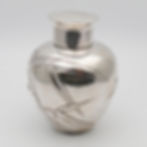History of Tea
- Antiques in Oxford
- Apr 3, 2024
- 3 min read
According to Chinese legend, some 5000 years ago, the mythical Emperor Shen Nung discovered tea’s ability to provide ‘vigour to the body, contentment to the mind and determination to the purpose’. The eighteenth to nineteenth century saw Britain wield a bloody, international campaign, to sustain the availability of its’ domestic population’s favourite beverage. Tea’s contemporary reputation as a quintessentially English drink exposes the entanglement of English notions of politeness and tradition with colonial violence.
Growing Popularity
During the early 17th century, Portuguese and Dutch traders began to import black and green tea into Europe. By the time of 1657, the first orders of tea reached London. Queen Consort to Charles II, Catherine of Braganza, is credited with popularising tea at court. The introduction of this new beverage subsequently demanded the production of a vast array of new wares, for its preparation, service and consumption.
Chinoiserie porcelain tea wares became the height of fashion and were often altered by European craftspeople to suit Western tastes. The craze for predominantly blue and white designs from East Asia therefore influenced pioneering European porcelain manufacturers to emulate these patterns.
The eminence of these manufacturers demonstrates the debt they owe to Chinese craftsmanship and the lucrative nature of tea-related business. Indeed, these patterns were produced as England’s tea consumption rose from about 20,000 to almost 6 million lbs between 1700 to 1768.
Development of Tea Caddies and Wares
Lockable tea caddies and the production of silver tea wares, such as Lot 104, 323 and 344, attest to tea’s status as a luxury commodity, and tea consumption as a mark of social distinction. Caddy keys were traditionally kept by the mistress of the house, in order to prevent theft from even trusted servants.
As with sets of porcelain, impressive silver tea sets and associated objects were bought and used for social gatherings, such as newly popular tea parties. Tea wares functioned similarly to clothes, carriages and furnishings- to express wealth to those in the owner’s intimate proximity.
The Boston Tea Party
While tea was enjoyed as an integral element of sociability and leisure amongst England’s elite, Britain violently protected its interests throughout its Empire. The exorbitant taxation of tea exported to America led to protests in 1773. 342 chests of tea were subsequently thrown into the Atlantic, which was known as The Boston Tea Party. Afterwards, Parliament retaliated by shutting off Boston’s sea trade pending payment for destroyed tea. Tensions fuelled the eventual War of Independence.
Later, the East India Company’s refusal to meet China’s requests to trade for tea in silver bullion alone, and secretly trade in opium, led to Chinese authorities’ halting of Britain’s illegal dealings. After China seized approx. £2.6million worth of opium and banned trade, Britain declared what is now known as the first Opium War (1839-1842).
Meanwhile, reports of uncultivated tea in Assam, India diverted the East India Company away from dependence on Chinese trade. The inhumane system of tea plantation indenture that thousands of Indian workers were forced into by British colonial rule. This motivated many to support the campaign for Indian independence.
Similarly, Britain’s enslavement of around 3 million people to labour on sugar plantations, enabled and fuelled Britons’ taste for tea sweetened by sugar. Before enslavement across all British colonies was outlawed in 1830, British troops were regularly deployed to suppress enslaved peoples’ resistance against the depravity inflicted on them. In 1816, a quarter of Barbados’ sugar crop were burned before colonial powers overpowered freedom fighters.
